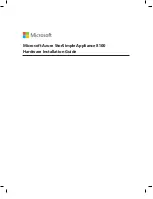
-22-
1.5.6.2 IEEE 802.1Q VLAN (Tag-based VLAN)
Tag-based VLAN is an IEEE 802.1Q specification standard. Therefore, it
is possible to create a VLAN across devices from different venders. IEEE
802.1Q VLAN uses a technique to insert a tag into the Ethernet frames.
Tag contains a VLAN Identifier (VID) that indicates the VLAN numbers.
The switch can classify each received packet as belonging to one and
only one VLAN. If the received packet is VLAN-tagged, the packet is
classified as belonging to the VLAN specified in the VLAN tag header. If
the received packet is untagged, it is classified as belonging to the de-
fault VLAN configured for the ingress port.
Required configurations:
•
Enable or disable GVRP support
•
VLAN information including VID (2-4094) and name
•
Tagged member ports of each VLAN
•
Outgoing tag mode for each member port
Tag - outgoing frames with VLAN-tagged
Untag - outgoing frames without VLAN-tagged
•
PVID (Port VID, 1-255 for untagged incoming frames) for each port
•
Ingress Rule 1 setting for each port : forward only packets with VID
matching configured PVID
•
Ingress Rule 2 setting for each port : drop untagged frames
PVID : this feature is useful to accommodate the devices which do not
support tagging to participate in the VLAN.
GVRP - GARP [Generic Attribute Registration Protocol] VLAN Regis-
tration Protocol : GVRP allows automatic VLAN configuration between
the switch and nodes. If the switch is connected to a device with GVRP
enabled, you can send a GVRP request using the VID of a VLAN defined
on the switch, the switch will automatically add that device to the exist-
ing VLAN. (GVRP - 802.1Q complaint, GARP - 802.1P compliant)
















































